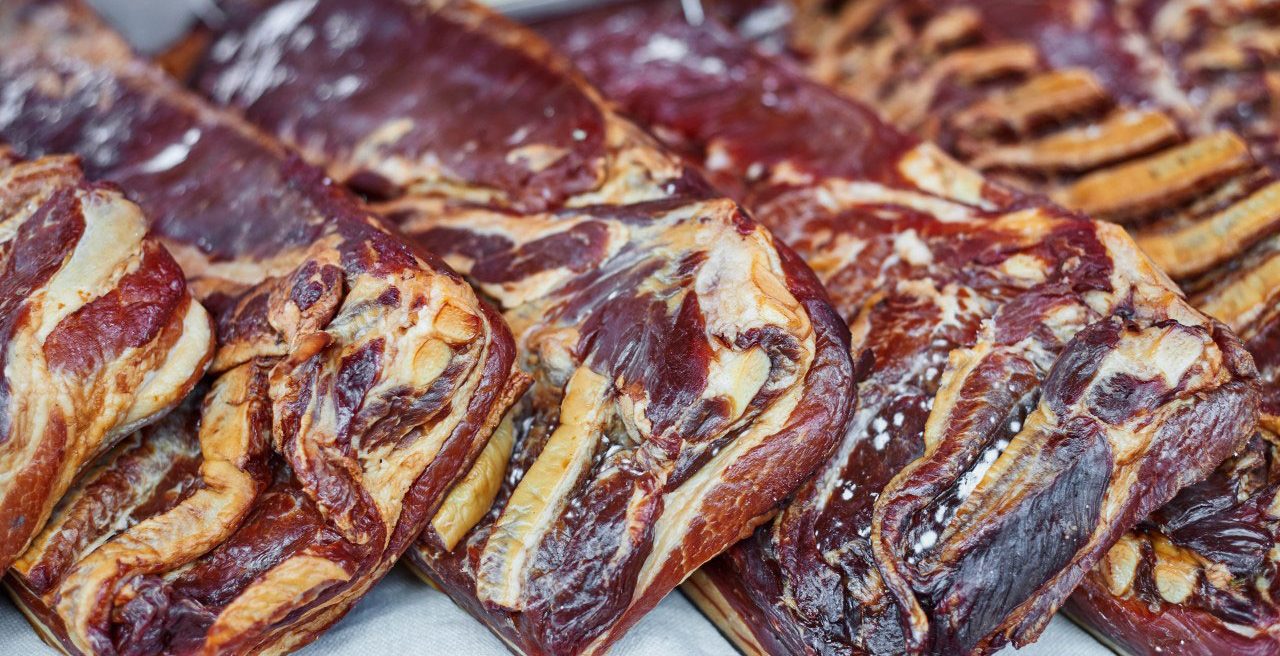Eating Like a Cave Person

It’s impossible to eat a true Paleo diet.
The argument sounds good: we’re descended from Stone Age men (and women) and evolution works slowly, so our modern bodies should do better if we ate the way they did. Heart disease, diabetes, cancer, and many other diseases may be caused by a mismatch between our abundance of food and our heritage. Celebrities, including Kobe Bryant, Miley Cyrus, and Uma Thurman, have signed on to the idea, along with a restrictive diet.
This seemingly scientific argument is really a fantasy. Speaking of eating a Paleo diet is kind of like saying “my love smells like a rose.” Yes, if she sprays on rose cologne.
Between 2.5 million and 10,000 years ago, Paleolithic hunter-gatherers picked berries off bushes, dug up tubers, chased down animals for meat, and scavenged meat from carcasses. At some point, they created tools to fish and hunt.
Today’s Paleo dieters don’t do all this. The current diet is largely a list of “thou shalt nots”: do not eat dairy, processed grains, peas and legumes, and processed sugars, since these foods did not arrive until later. Do eat nuts, vegetables, and meat, and maybe some fruit.
In “Paleofantasy,” evolutionary biologist Marlene Zuk, PhD, of the University of California, Riverside, debunks the myths at the core of the new diet. We are not as similar to Stone Agers as the dieters think; we’ve evolved. Food has changed dramatically, too. Both the eaters and what is eaten are vastly different.
Human beings evolved in response to new food options, for example milk. The enzyme lactase — which breaks down lactose sugars in milk — once shut down after infancy. Within about 7,000 years, humans evolved a mutation that kept the gene turned on throughout life. The billions of bacteria living in our intestines, helping us digest, evolve much faster; Stone Agers probably had a very different population.
Scientists have thought that human beings developed the ability to break down starch into glucose around the time we began to farm. But more recently, some have argued that we began eating more tubers and other starches once we started cooking over campfires. Human beings are much better than chimps at converting starch into enzyme, which suggests that starches helped us evolve.
It’s unclear what proportions of meat and vegetables various peoples ate in those early times or when and where they added in grains and dairy. What we do know is that human diet varied by the season and place. The real lesson may be to stay flexible: "We now know that humans have evolved not to subsist on a single, Paleolithic diet but to be flexible eaters, an insight that has important implications for the current debate over what people today should eat in order to be healthy," anthropologist William Leonard, PhD, of Northwestern University wrote in Scientific American in 2002.
Even with all the limitations the Paleo dieters accept they’re not eating the same kind of food as Stone Agers did. Every fruit, vegetable, and animal is different today, other critics explain. We’ve bred cows and chickens to produce fatty meat — nothing like the game Stone Agers consumed. Our vegetables have been bred to have the plumpest fruits and kernels and the fewest natural poisons. Corn began as a straggly grass known as teosinte. Bananas once had seeds. Carrots were purple and white, not orange.
Stone Agers also make unlikely health models. They probably had, for example, atherosclerosis, suggest researchers in a recent study in The Lancet. Looking at ancient mummies from societies of farmers, foragers, and hunter-gatherers, the team found signs of clogged arteries in 47 of 137 mummies from around the world.
It’s likely that Stone Agers were often hungry. There is some science to back up the idea that periodic fasting could be good for your waistline but not necessarily followed by a modern fatty steak.
Updated:
April 09, 2020
Reviewed By:
Janet O’Dell, RN